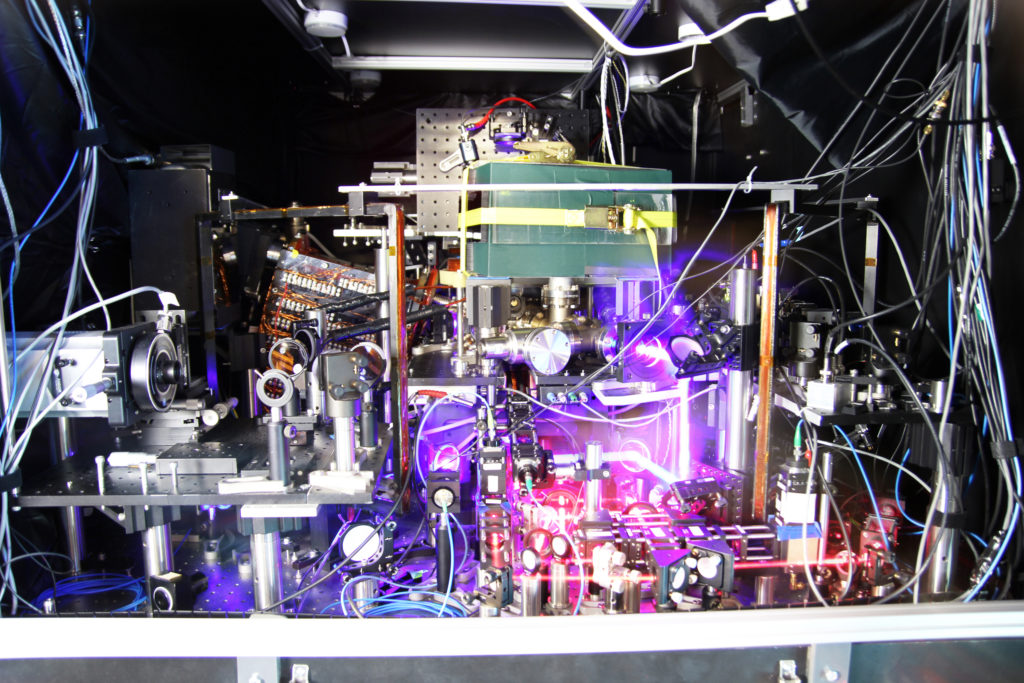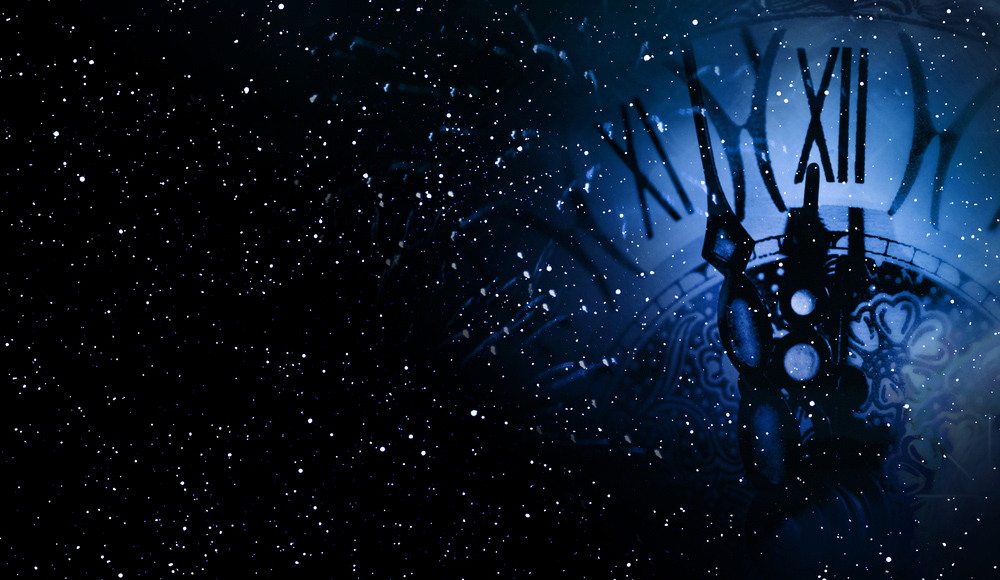Atomic Clocks Advance Cosmic Creation and Design Models
Though one may be overpowered, two can defend themselves. A cord of three strands is not quickly broken. —Ecclesiastes 4:12
This Bible verse makes the point that a triple-braided cord or a group of three humans offers much greater strength and efficacy than a single-braided cord or a lone human. Physicists have discovered that this principle of three also applies to atomic clocks. Atomic clocks work by the natural oscillation of atoms, and each atom “ticks” at a different speed. These clocks have allowed the development of modern conveniences such as cell phones, GPS, and the internet. The clocks’ accuracy also carries significant relevance for exploring cosmic design features and developing more-detailed cosmic creation models.
Optical Atomic Clocks
Atomic clocks tick at a rate (billions of times per second) established by the frequency of light emitted or absorbed when an atom changes from one energy state to another. Atomic clocks based on different atoms run at different rates. An optical atomic clock is an atomic clock that runs at an optical frequency. There is growing experimental evidence that optical atomic clocks provide superior precision to cesium atomic clocks, which presently are the standard timekeeping devices for fundamental physics, global navigation satellite systems, and many other frequency standard applications.
Three of the world’s best optical atomic clocks are the strontium-87 clock at the Joint Institute for Laboratory Astrophysics (JILA) and the aluminum-27 and ytterbium-171 clocks at National Institute of Standards and Technology (NIST), all in Boulder, Colorado. Each of these clocks has measured frequencies estimated to be correct within 2 parts per quintillion (2 parts in 1018) or better.1 These clocks gain or lose no more than 1 second over the entire age of the universe.
Potentially, optical atomic clocks are a hundred times more accurate than the best cesium atomic clocks. However, before the best optical atomic clocks can replace the best cesium atomic clocks as time-keeping instruments, physicists must first demonstrate reproducibility of optical atomic clock time measurements through a series of clock comparisons.
Optical Atomic Clocks Comparison Experiment
A team of 35 physicists at JILA and NIST, known as the Boulder Atomic Clock Optical Network (BACON) Collaboration, designed an experiment for comparing the timing measurements of the three optical atomic clocks in their possession.2 The comparison was especially robust because the three clocks are based on isotopes of three different elements, which means that each of the three clocks runs at a different rate.
The BACON Collaboration linked their optical atomic clocks (see figure) by two independent means: a 3.6-kilometer optical-fiber link and a 1.5-kilometer free-space link that sent laser pulses through the air between NIST and JILA. Both connection methods were successful. Clock comparisons were achieved by measuring clock frequency ratios using femtosecond-frequency combs (1 femtosecond = one quadrillionth of a second).

Figure: The Strontium-87 Optical Atomic Clock at JILA
Credit: NIST
The collaboration ran clock comparison experiments from November 2017 through to June 2018. The sum of the statistical and systematic uncertainties (2 methods, 3 clocks) in their frequency ratio measurements were 5.9 x 10-18 for the aluminum-27 and ytterbium-171 clocks, 8.0 x 10-18 for the aluminum-27 and strontium-87 clocks, and 6.8 x 10-18 for the strontium-87 and ytterbium-171 clocks (all tiny numbers). These measurements are the first reported clock frequency ratios with uncertainties below 1 x 10-17.
Scientific Applications and Philosophical Implications
Now that physicists possess clocks more than a factor of ten superior in their timekeeping capability, we can look forward to scientific advances, including some with broad philosophical and theological implications.
Climate Change
Some of the advances will provide more accurate and reliable determinations of the rates and locations of climate change. According to Einstein’s theory of general relativity, Earth’s gravity causes the frequency of an atomic clock to vary with the altitude of the clock. The altitude difference between two optical atomic clocks like those used in the NIST–JILA experiments can be determined to a precision of about 1 centimeter. Therefore, it is now possible to measure, unambiguously and accurately, even tiny changes in sea levels and ice sheet thicknesses around the world.
Driverless Vehicles
The same optical atomic clocks can be used to greatly improve our global positioning satellite (GPS) navigation systems. Right now, publicly available GPS navigation systems can determine what highway or road one is driving on and where one is on the road to an accuracy of about 10 meters. The application of optical atomic clocks like the ones at the NIST and JILA make possible GPS navigation systems that can track the position and movement of a vehicle or a cell phone to an accuracy of about 1 centimeter. Such systems will not only know what lane the driver is in but whether or not the vehicle is drifting in the lane. Such systems will make possible driverless vehicles and the elimination of vehicular accidents.
Cosmic Features
Radio astronomers have a lot to look forward to. With clocks like the ones at the NIST and JILA, they will be able to use their long baseline radio telescope interferometers to measure astronomical distances and produce maps of galaxies, black holes, and other cosmic structures to unprecedented precision. They may even be able to probe the physics of quantum gravity.
Nature of Dark Matter
The BACON Collaboration achieved an immediate scientific advance in their experiments. They used the clock frequency ratios to search for signs of interactions between ordinary matter (protons, neutrons, and electrons that strongly interact with photons) and dark matter (particles that do not or very weakly interact with photons). If ordinary matter (atoms) were to interact with dark matter through electromagnetic forces, such interactions would cause slight changes in the optical atomic clock frequencies. The BACON Collaboration detected no changes. In so doing, they established an upper limit to interactions between ordinary and dark matter that was nearly ten times lower than what physicists previously had determined. Soon-coming advances in optical atomic clock technology hold the potential of revealing the nature of dark matter particles and possible additional evidences for cosmic design.
Creation of the Universe
Philosophers and theologians can anticipate benefits in addition to new evidences for cosmic design. For example, these clocks will provide more definitive tests of Einstein’s theory of general relativity, which is the foundation for the theorems that establish that a Causal Agent beyond space and time created the universe.3 These clocks can test to even greater precision the biblical claims (see, for example, Jeremiah 33:25 and Romans 8:20–22) that the fundamental constants governing the laws of physics do not change.4 Thanks to the technological advance (of the three clocks’ superior measurements) achieved by the BACON Collaboration, we all can anticipate more evidence for God’s existence and the inerrancy and predictive power of the Bible.
Endnotes
- S. M. Brewer et al., “27Al+ Quantum-Logic Clock with a Systematic Uncertainty below 10-18,” Physical Review Letters 123, no. 3 (July 2019): id. 033201, doi:10.1103/PhysRevLett.123.033201; Tobias Bothwell et al., “JILA SrI Optical Lattice Clock with Uncertainty of 2.0 x 10-18” Metrologia 56, no. 6 (December 2019): id. 065004, doi:10.1088/1681-7575/ab4089; W. F. McGrew et al., “Atomic Clock Performance Enabling Geodesy below the Centimetre Level,” Nature 564 (December 6, 2018): 87–90, doi:10.1038/s41586-018-0738-2.
- Boulder Atomic Clock Optical Network (BACON) Collaboration, “Frequency Ratio Measurements at 18-Digit Accuracy Using an Optical Clock Network,” Nature 591 (March 25, 2021): 564–569, doi:10.1038/s41586-021-03253-4.
- Christian Sanner et al., “Optical Clock Comparison for Lorentz Symmetry Testing,” Nature 567 (March 14, 2019): 204–208, doi:10.1038/s41586-019-0972-2; Masao Takamoto et al., “Test of General Relativity by a Pair of Transportable Optical Lattice Clocks,” Nature Photonics 14, issue 7 (July 2020): 411–415, doi:10.1038/s41566-020-0619-8.
- R. M. Godun et al., “Frequency Ratio of Two Optical Clock Transitions in 171Yb+ and Constraints on the Time Variation of Fundamental Constants,” Physical Review Letters 113, no. 21 (November 21, 2014): id. 210801, doi:10.1103/PhysRevLett.113.210801; Hugh Ross, “More Evidences for Biblical Claim of Unchanging Physics,” Today’s New Reason to Believe, June 22, 2020.






